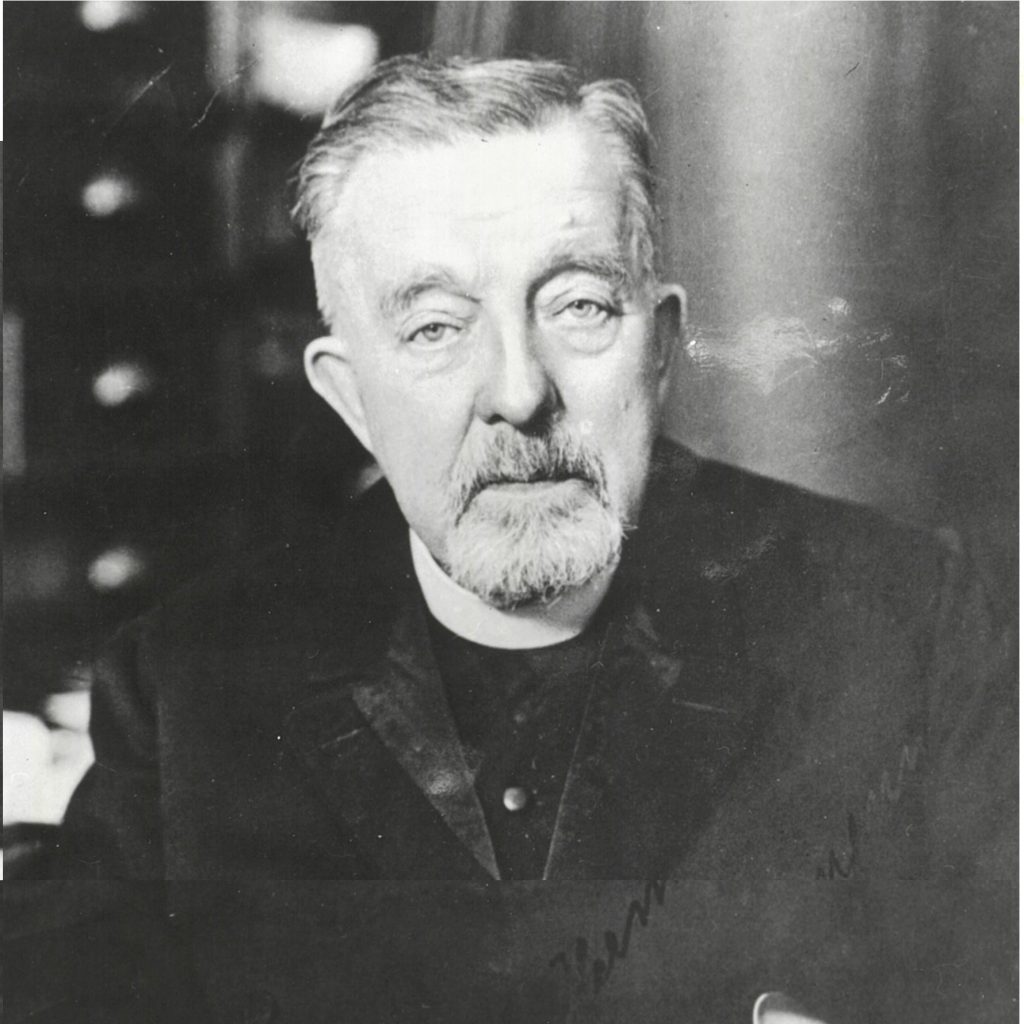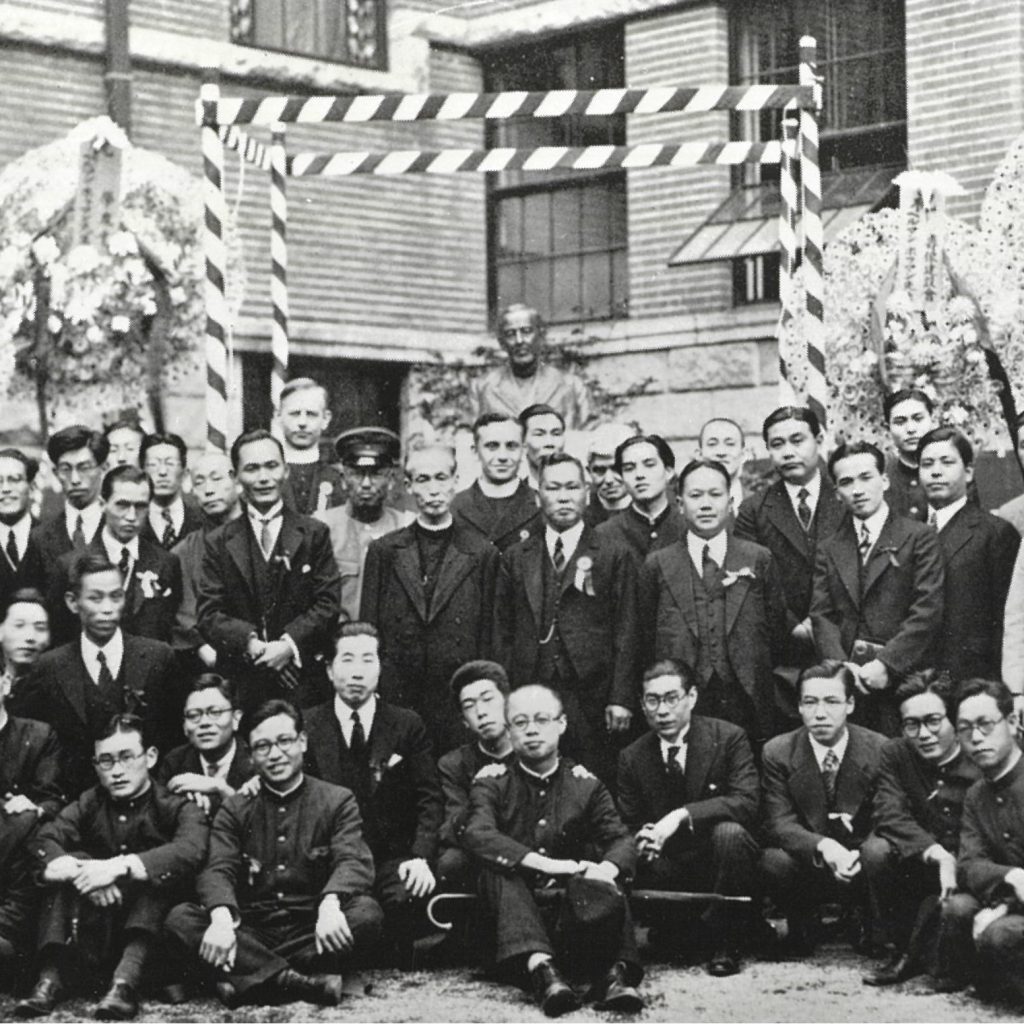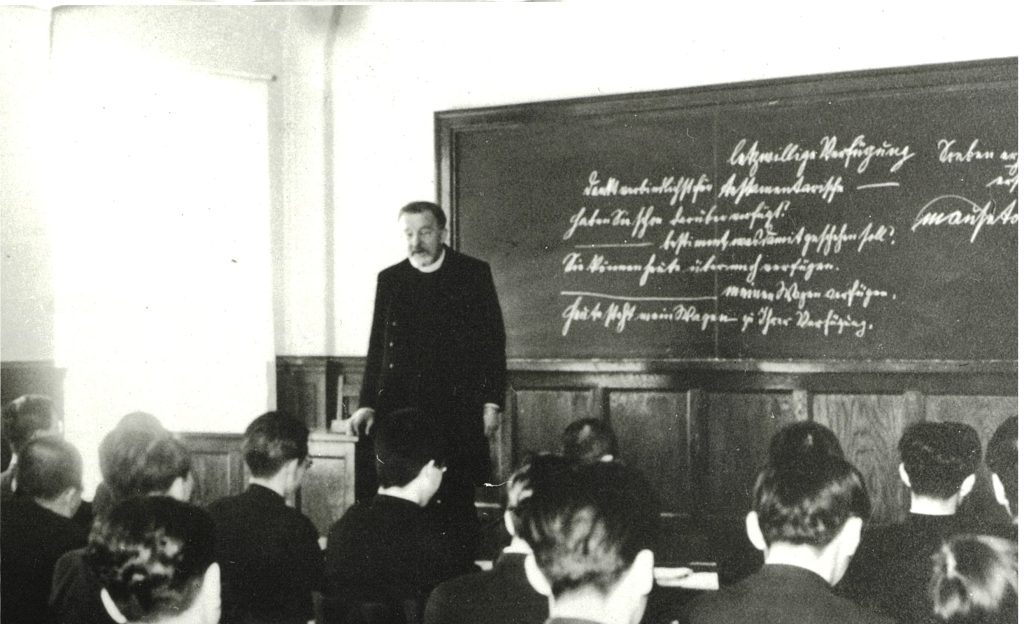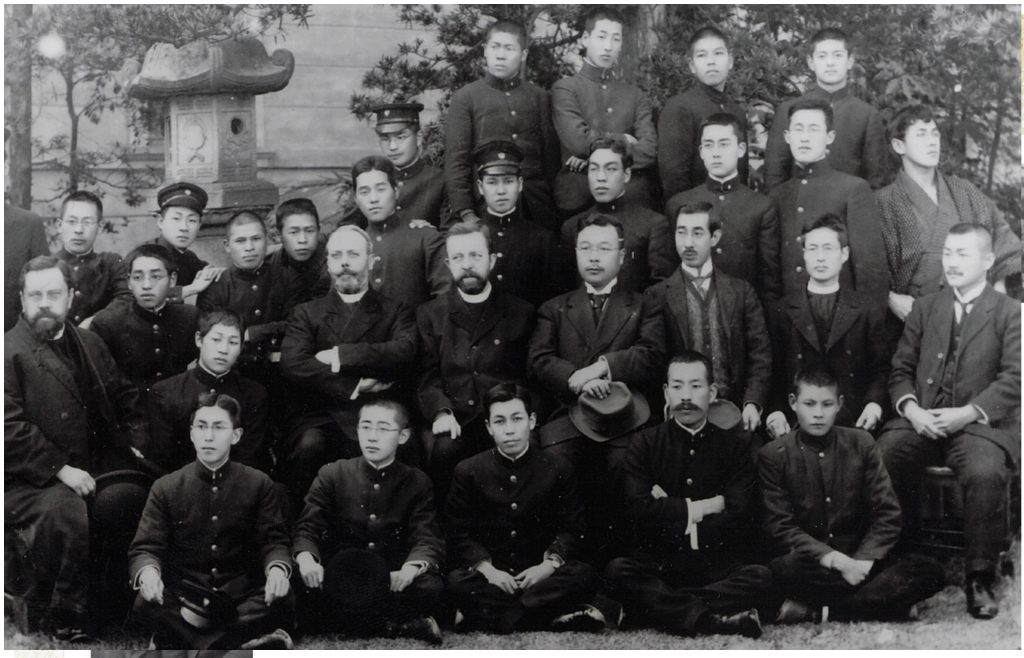Everlasting affection towards university by Hermann Hoffman, 110 years after its founding

Since his arrival in Japan in 1910, Father Hermann Hoffmann, the first president of Sophia University, made strenuous effort to establish the university including the acquisition of land for the school and faced many challenges after its opening. Who was he really like, beloved by his students as “Dad” for his passionate teaching and witty personality?
Father Hermann Hoffmann, the founder of the Sophia University
The statue of Father Hermann Hoffman (reign: 1913-1937) had moved its location in front of Building No.1 for the third time in the summer of 2022. President Hoffman’s enduring popularity is epitomized by this statue. The statue was stablished in May of the following year the President Hoffmann was hospitalized in October 1936 by the alumni to pray for his recovery (the statue was first placed at the gymnasium which was an open space back then). Despite their prayers, the president himself was unable to attend the unveiling of the statue, passed away shortly afterward on June 1, at the age of 72. Three months prior to his death, he received a silver cup from Showa Emperor in recognition of his achievements as the first president of the university.
President Hoffmann was born on 23 June in 1864 in Rhine region, Germany. He had joined the society of Jesuits at the age of 16. After studying in various European countries, he became a professor in philosophy at the University of Falkenburg in Netherlands. In 1910 at the age of 45, he moved to Japan with the command from the society of Jesuits. He studied Japanese and while teaching German at the school where he was associated with, he was instrumental in opening Sophia University.


Father Hermann Hoffmann, the founder of the Sophia University
The statue of Father Hermann Hoffman (reign: 1913-1937) had moved its location in front of Building No.1 for the third time in the summer of 2022. President Hoffman’s enduring popularity is epitomized by this statue. The statue was stablished in May of the following year the President Hoffmann was hospitalized in October 1936 by the alumni to pray for his recovery (the statue was first placed at the gymnasium which was an open space back then). Despite their prayers, the president himself was unable to attend the unveiling of the statue, passed away shortly afterward on June 1, at the age of 72. Three months prior to his death, he received a silver cup from Showa Emperor in recognition of his achievements as the first president of the university.
President Hoffmann was born on 23 June in 1864 in Rhine region, Germany. He had joined the society of Jesuits at the age of 16. After studying in various European countries, he became a professor in philosophy at the University of Falkenburg in Netherlands. In 1910 at the age of 45, he moved to Japan with the command from the society of Jesuits. He studied Japanese and while teaching German at the school where he was associated with, he was instrumental in opening Sophia University.

According to an alumnus who knows him at the time, President Hoffman memorized every single face and name of all the new students by his first class (*2). Although he had assigned a lot of homework, it was carefully corrected and returned. In class, he would sometimes speak enthusiastically that some spit flew. No one dared to care about this. Students rather saw it “as a kind of baptism”, indicating close relationship with the professor which is typical of Sophia University (*3).
In “The fifth-year History of Sophia University (1963)”, the class held by President Hoffmann is described as follows:
As soon as he enters the classroom, he would immediately point out students by name and ask them questions. When the students were able to answer properly, he would raise both arms in the air with “Banzai” posing as if it was for him. When the students had done it poorly, his arms are thrown down in disappointment. That deep, clear, piercing blue eyes and acknowledging each other had struck young students so dearly. Then, he displays his humor and wit and the bell rings ending the class just as everyone bursts into laughter. (*4)
Hoffmann Glossary of Words
Sophia University faced various series of challenges after its establishment. Upon opening of the university, the Catholic Church in Europe especially in Germany had supported. However, the defeat of Germany in World War put the university in a financial crisis. To make matters worse, the Great Kanto Earthquake occurred in 1923, destroying half of the red-brick school buildings. On the top, relations between the university board and Japanese military worsened in the 1930s. In running the university, President Hoffman was confronted with a difficult and demanding challenges. Having overcome many obstacles in a foreign land, President Hoffman left behind words of wisdom that are still relevant today.
This forced the university to deal with tough situation in the management of the school. President Hoffman, who overcame various challenges in a foreign land, left a noble saying that is still relevant to people today:
“Losing money should not be a reason to be disappointed nor discouraged, but if one loses hope and courage, one will lose everything. “(*5)
A man’s worth is not determined by the position he has attained or the success he has achieved. The worth of an actor is not determined by his role, but by how well and how fully he performs it. Man’s worth in this world is also determined by how conscientiously he carries out his duties.(*6)
True to his word, President Hoffman boldly fulfilled his duties and ensured the advancement of the university.

President Hoffmann in his later years
President Hoffman was hospitalized at Seibo Hospital in Shinjuku, Tokyo in 1936. President Hoffmann continued to care deeply about his students despite his illness. Father Hermann Huevers (1890-1977, in office 1937-1940), the second President, writes in the book that “This heartfelt kindness of character laid the foundation of the Sophia spirit. That spirit is that of rationality, of domesticity, of unconditional fulfillment of duty, of ethical idealism.”
President Hoffman now rests in St. Ignatius Church, right next to the Yotsuya campus, where he dedicated his life.
(*1) Published Tokyo Sophia Club, 1957, P21-22
(*2) P73
(*3) P74
(*4) Fifty-year History of Sophia University, Sophia University, 1963, P53
(*5) P55
(*6) P22
(*7) P22